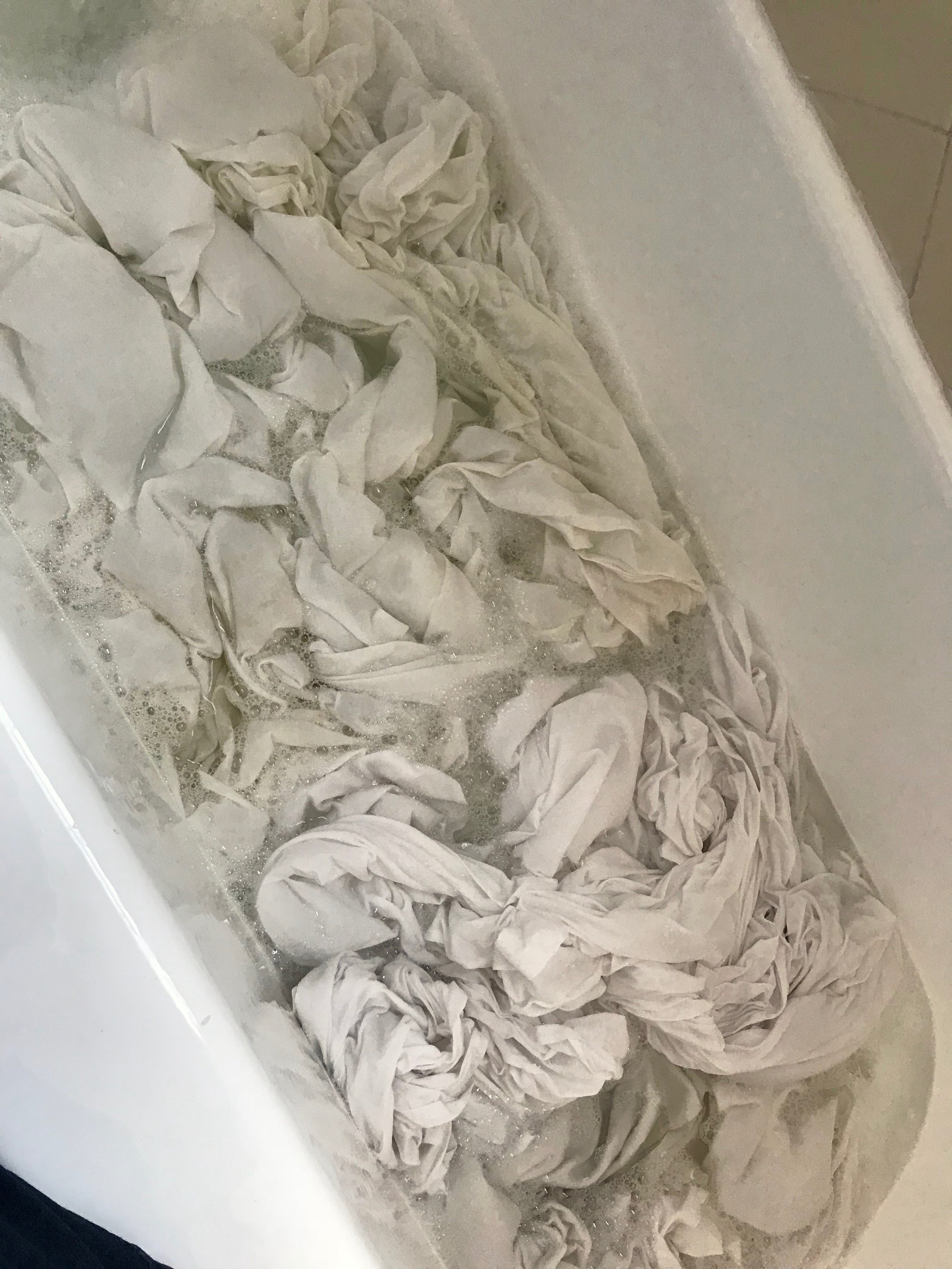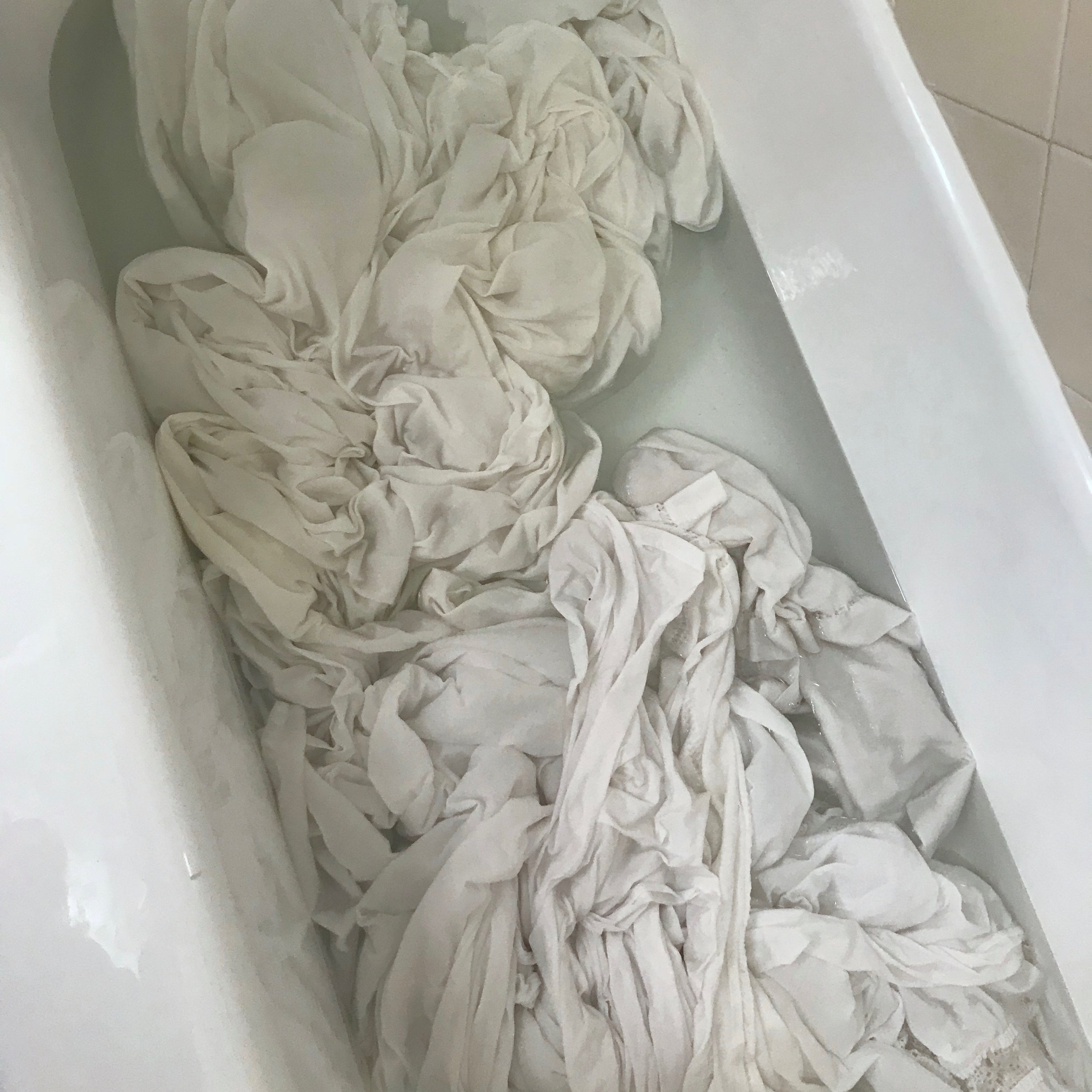Laundering Vintage Linens
When my grandmother died, I selected piles of vintage linens from her house as a keepsake. But many of these items, collected during her nearly a century of living, had yellowed or were stained. So I consulted the experts and learned to carefully launder these vintage gems, restoring them to a crisp whiteness.
I first used this process to wash two full/queen sized sheets and two table runners. The sheets are both cotton with handmade lace edging. The runners are linen with pulled-thread embroidered edging. One sheet in particular was very yellow -- so yellow that I assumed it was ecru. It was also stained with what may have been blood or rust -- something reddish brown which had been there a long time. The staining was extensive, so I assumed it would not come completely clean. However, to my surprise, all four pieces emerged after this process white and unstained! And the ecru sheet was actually white.
I am including links for the sources I used. Please consult them as they are experts on vintage linens and have other tips which I would have tried had this process not worked.
Timing
All told, this cleaning process took nearly three days. Repeating the soaking, draining, rinsing, soaking process several times is clearly key!
Materials
Woolite
Dawn Dishwashing Detergent
OxyClean Powder
White Vinegar
Soaking in Woolite
Step 1: Hot Water Soak
To prepare vintage linens for being cleaned, several experts suggested beginning with a soak in clean, hot water. I filled the bathtub with water as hot as I could get from the tap, and started with an hour-long soak.
When the water had cooled -- and was rather dirty -- I drained the tub.
Step 2: Woolite
Following the hour-long hot water soak, I filled the tub with hot water again, and this time I added about 1 cup of Woolite. I swirled the linens about a bit to ensure that the Woolite was evenly distributed in the tub, and then I left it to soak for about 6 hours.
I drained the tub, filled it with hot water again, added 1 cup of Woolite. And left it to soak overnight.
Step 3: Woolite + Dawn
The following morning, I drained, refilled, and soaked with Woolite one more time. But this time, after draining while I was refilling, I gently rubbed the stubborn stained spots with Dawn dish detergent.
Dawn is great at breaking down greasy and protein-based stains, but it is relatively gentle. Don't use anti-bacterial or other enhanced formulas. Basic Dawn is the key.
Step 4: Rinse Thoroughly
About six hours later, I drained the tub again, refilled with hot water, and then drained again, gently swirling the fabric and pressing it against the side of the tub to get as much soap out of the fabric as possible. I repeated this three times until the water was clear and clean.
Step 5: OxyClean
Because there were still faint stains on the sheets and runners, I then filled the tub again with hot water, and this time I added about 3/4 cup of OxyClean. Again, I swirled the fabric in the tub to make sure everything was evenly distributed. And then I let it sit for another six hours.
Step 6: Vinegar & Rinsing
I also read that vinegar helps to release detergent agents from fabric fibers, so once I'd finished the OxyClean soak, I drained the tub, and added about 6 cups of white, distilled vinegar to the wet fabric in the tub. Then I filled the tub three times with hot water -- draining in between each filling, adding more vinegar, and pressing the cloth against the side of the tub to release the water. By the end of the third rinse, the water was running clean and clear.
Step 7: Rinse & Spin
Had it not been raining, I probably would not have done this next step. And to be clear, most experts say DO NOT put vintage linens in the washing machine. However, I have a front-loading machine without an agitator, so it is fairly gentle. Everyone says not to wring out vintage fabrics -- they are too delicate to withstand the stress. But I knew that drip drying would also be stressful since they were so heavy with water, and it was raining and therefore humid. So, I took the risk!
I loaded the sheets into the washer and put the runners each in a separate delicates bag, and placed them in the washer as well. Then I ran a Rinse/Spin cycle only -- cool water, gentle spin.
They survived! Had this been vintage batiste or something more fragile than sheeting, I probably wouldn't have taken the chance. But all's well that ends well!
Step 8: Hang to dry
Then I hung them to dry. It was raining, so they hung up in the bathroom, but if it had been dry, I would have hung them outside in the sunshine.
Conclusion
All in all, this process took about three days, and all four pieces went from dingy, grungy, and stained, to crisp and white. I am so pleased!
What did I do with these sheets and runners? I made them into window treatments. Read all about it here: No-Sew Curtains from Vintage Linens.
The Finished Product: Snowy White Linens
Pin this!
Share on Instagram!











